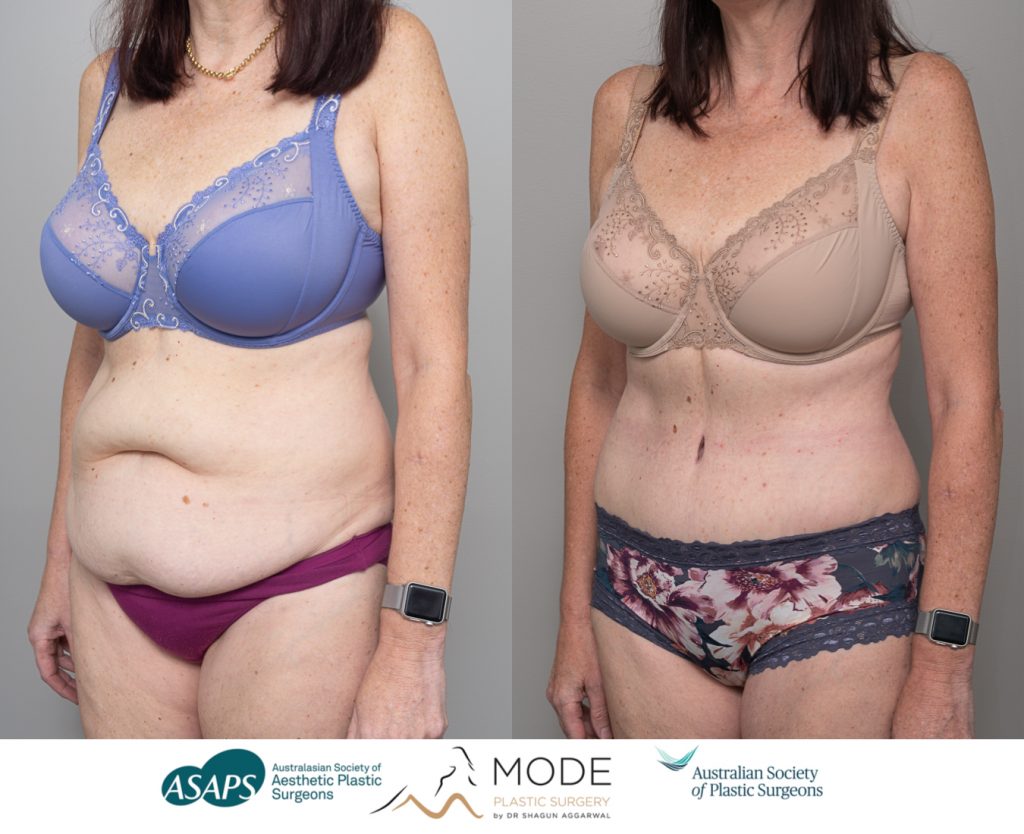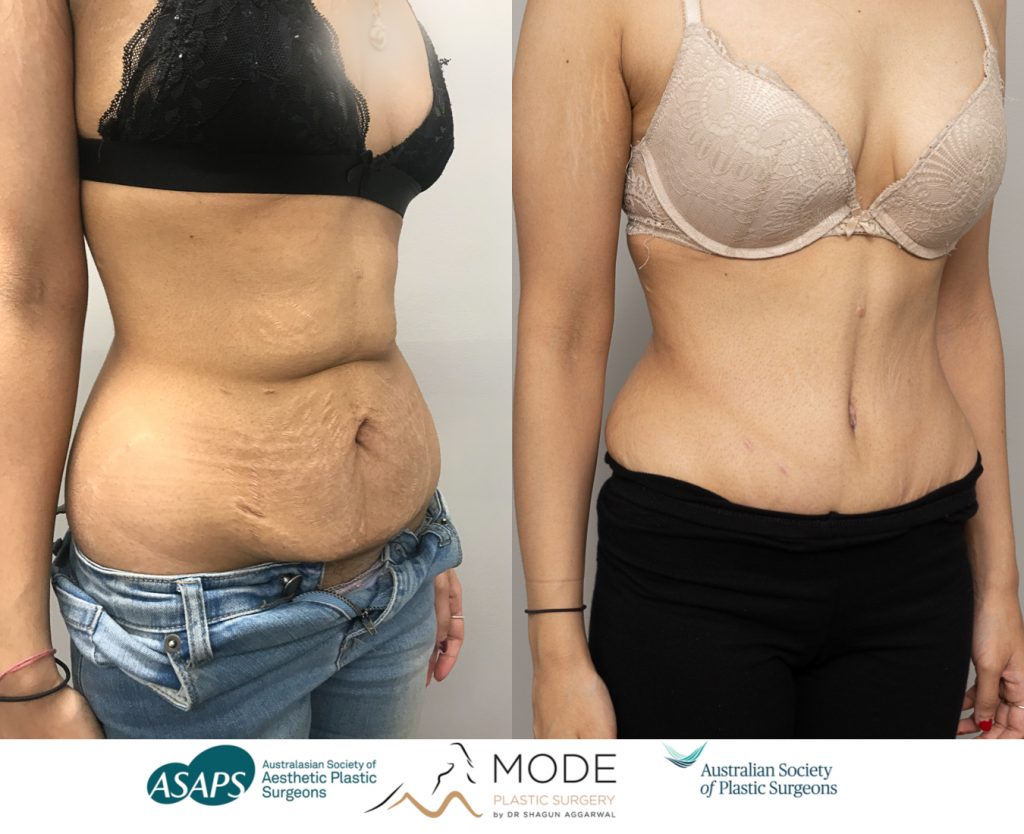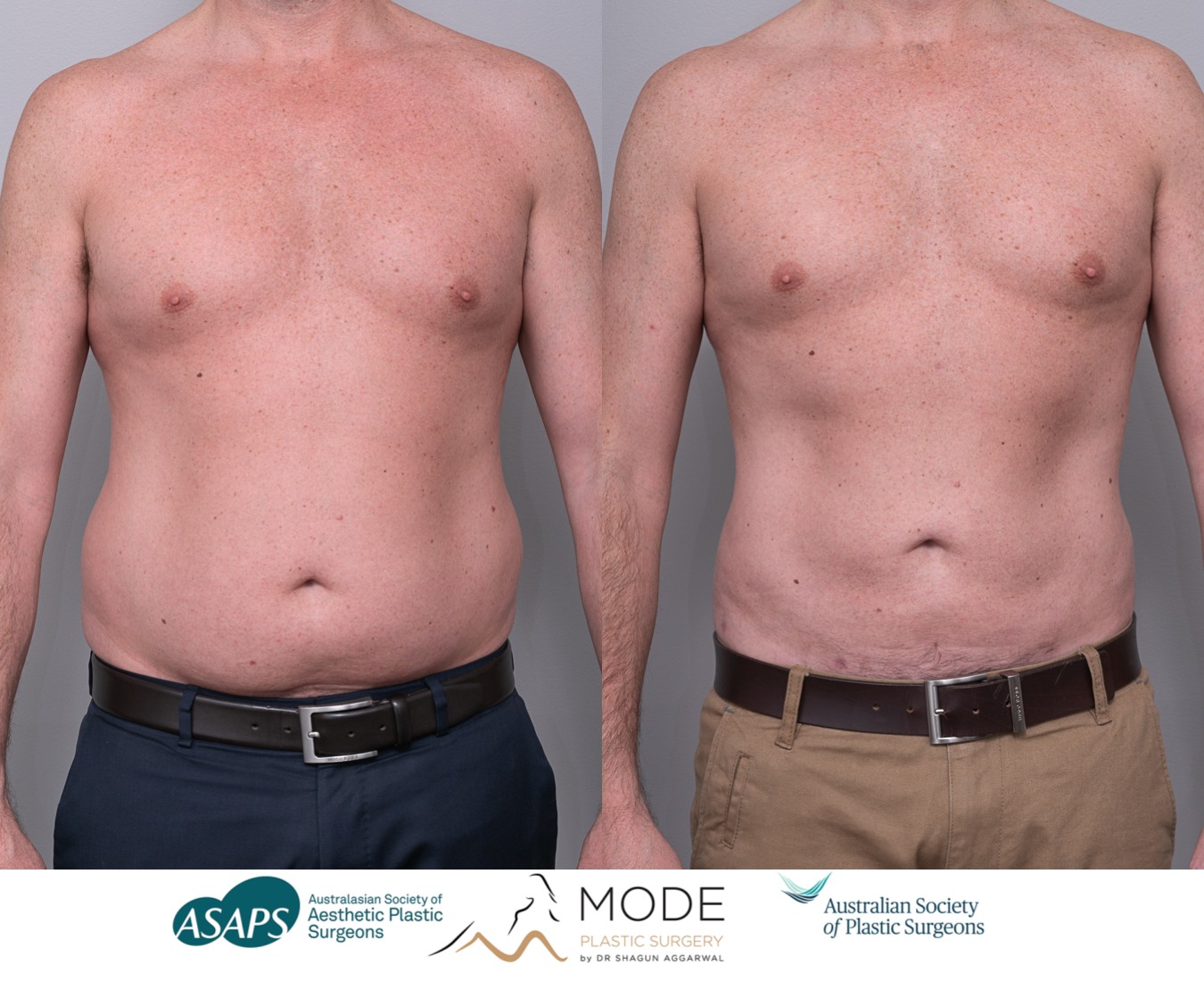Tummy tuck vs Liposuction (vs mini tummy tuck): What operation do I need?
This is a common question asked by our patients at Mode Plastic Surgery. Some patients come requesting liposuction when what they need is a tummy tuck. Doing the wrong operation can yield worse results, and sometimes worse than where the patients originally started. Undergoing surgery, recovering and spending money to have the incorrect procedure is not an ideal situation. So we thought it best to go through some common questions on the topic.
What’s the difference between liposuction and a tummy tuck?
Liposuction involves removal of the fat under the skin. It uses a cannula that passes in and out, sucking the fat through a tiny hole. It does not remove the skin. Therefore this is an ideal procedure for those who are fit and healthy (not overweight) and do not have loose skin. It is suitable for people with areas of fat (such as love handles, upper or lower tummy, thighs, etc.) that they cannot shift through diet and exercise.
A tummy tuck is a procedure involving the removal of excess skin and fat. Usually, the skin from the belly button down to the groin crease, and the hip bones at the sides, is removed. Some liposuction is always used as an adjunct to this procedure, especially out the sides (flanks, love handle area). The skin is then pulled down tight. Tummy Tucks are the ideal procedure for patients who have loose skin and excess fat. If these patients have liposuction alone, it can create more loose skin.
What is the difference between a tummy tuck and a mini tummy tuck?
A mini tummy tuck involves a short scar in the groin crease, mainly as a way for the surgeon to get access to the rectus (six-pack) muscles. Women (and men) who have muscle separation can have this corrected via this approach, and this is the main part of the procedure. It is not a replacement for a full tummy tuck as it does not remove much in the way of the skin of the tummy.
A mini tummy tuck seems appealing to many patients, as patients feel they would like to keep the scar of their tummy tuck as short as possible. In general, the longer the injury, the more skin the surgeon can remove. So if you have a tummy tuck to remove the skin, then you remove as much of it as you need to get a good result. The scar will be hidden in clothes and improves with time. However, if there is excess skin left behind, and the contours not corrected, this will be difficult to hide in clothing.
So what is the ideal procedure?
Each patient is assessed by Dr Aggarwal at Mode Plastic Surgery to determine if they are a candidate for liposuction, or a mini tummy tuck, or a full tummy tuck. In general, there is one procedure that each patient is the most suitable for, and we would counsel patients to do one that will achieve the outcome they want.
What happens during a tummy tuck surgery?
The skin of the tummy between the groin crease and up to just above the belly button (and out to the sides, roughly to the hip bones) is removed. The skin above this is lifted to the rib cage and is ‘window-shaded’ down to close the tummy. Before this is done, the underlying muscles (the rectus or six-pack muscles) are tightened to produce a flat contour. The belly button is usually kept by cutting around it, and when the skin is pulled down, it takes a new position on the surface of the belly, although its real position has not changed.

What are the signs of a good tummy tuck candidate?
In general, you need to be fit and healthy. Unfortunately, this is not a procedure for patients who are grossly overweight. They carry weight both inside the tummy near the organs (Visceral fat), as well as on the outside under the skin. There is no way to reduce the fat around the organs other than diet and exercise. Therefore being an ideal weight (or achieving your healthiest and stable weight) is essential so the flattest contour of the tummy can be achieved.
The procedure is also not offered to patients actively smoking, and those with multiple medical problems who are at risk under an anaesthetic.
Those who are; a healthy weight, maintain a balanced diet, do not have many medical problems, and overall have realistic expectations, are the ideal candidates for a tummy tuck.
Do I need to lose weight before my tummy tuck procedure?
Absolutely, this reduces the amount of fat around the organs, as well the fat under the skin. This allows the flattest contour to be achieved during surgery and the most amount of skin to be removed. Not to mention your recovery will be smoother; it is known to reduce both anaesthetic complications and also surgical complications like wound healing problems.
How long is the recovery time for a tummy tuck?
The first 8 weeks you are restricted from heavy lifting and heavy housework and are wearing a binder. Between 8 to 12 weeks you progress to regular activity and by 3 months you can go to the gym to do most if not all exercises.
How long will I need off work following a tummy tuck?
For most desk type jobs you’ll need around 4 weeks. If you are someone who does heavy lifting at work, that would not be allowed in the first 8 weeks.
Will the results last?
Absolutely – once the skin has been removed, it does not come back. However, one has to maintain a healthy lifestyle, including a balanced diet and exercise. Significant weight gain and loss will change the appearance as will a pregnancy for women.
Does insurance/medicare cover a tummy tuck?
A cosmetic procedure does not carry any insurance or Medicare rebates. The item number for abdominoplasty/tummy tuck was removed in November 2018 and restricted mostly to those with a significant weight loss (BMI drop of greater than 5 points). If someone has lost a lot of weight (5 BMI points) and can demonstrate interference with activities of daily living, and the excess skin causing issues/breakdown of skin that has not improved with conservative measures, then they qualify for a Medicare item number. Similarly, if the procedure is being done for a (significant) hernia repair, the procedure may also be covered by an item number.
Medicare Item number coverage, combined with appropriate health insurance, can mean the hospital and theatre costs are covered, a rebate possible for the surgical and anaesthetic fees, and that no GST is applicable (which is applied to cosmetic procedures). In general, this can halve the cost of surgery.
Will a tummy tuck help/remove my stretch marks?
While there is no excellent solution to removing stretch marks, a tummy tuck will often remove many of the tummy stretch marks. This is because the skin of the lower tummy is being removed during surgery. Given the lower belly is where most of the stretch marks occur, these are almost entirely removed in surgery. However, stretch marks in the upper tummy will usually remain after surgery.

For more information on the abdominal procedures we perform at Mode Plastic Surgery, click here.
